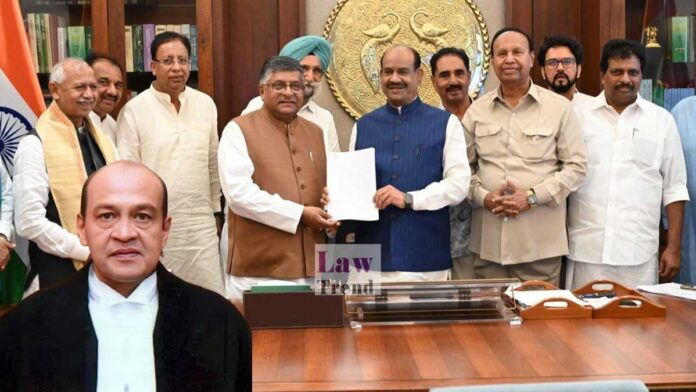In a major development, 145 Members of Parliament from the Lok Sabha and 63 from the Rajya Sabha on Monday submitted a formal petition seeking the impeachment of Justice Yashwant Varma. The move comes in the wake of a sensational controversy involving the discovery of bundles of burnt currency notes from the judge’s official residence.
According to procedure, a motion for the removal of a judge under Article 124(4) or 217 of the Constitution requires the backing of at least 100 Lok Sabha MPs or 50 Rajya Sabha MPs. The Speaker of the Lok Sabha or the Chairman of the Rajya Sabha will now decide whether to admit or reject the motion.
Union Parliamentary Affairs Minister Kiren Rijiju confirmed that over 100 lawmakers had signed the notice. He also stated last week that there was broad political consensus across parties on the move to impeach Justice Varma.
Justice Varma has strongly denied any wrongdoing. However, a Supreme Court-appointed in-house inquiry committee recently concluded that Justice Varma and his family exercised active control over the storeroom where the cash was found. The panel termed the judge’s conduct as grave misconduct warranting his removal.
The cash recovery incident has triggered widespread public and political uproar, with many seeing it as a critical test of judicial accountability in India.
Next Steps in the Parliamentary Process
Under the Constitution of India, the process for the removal of a High Court judge is governed by Article 217(1)(b), which cross-refers to the procedure laid out in Article 124(4) for a Supreme Court judge, and is detailed in the Judges (Inquiry) Act, 1968.
The Lok Sabha Speaker will first decide on the admissibility of the motion. If the motion is admitted, the Speaker is required to constitute a three-member inquiry committee comprising:
- A sitting judge of the Supreme Court of India.
- A Chief Justice of a High Court.
- A distinguished jurist.
This committee will investigate the charges levelled against Justice Varma and frame definite charges. Justice Varma will be given an opportunity to present his case before the committee. If the committee’s report finds the judge guilty of misbehaviour or incapacity, the motion for impeachment will be taken up for discussion and voting in the Lok Sabha.
To pass, the motion requires the support of a special majority—a majority of the total membership of the House and a majority of not less than two-thirds of the members present and voting. If passed by the Lok Sabha, it will then be sent to the Rajya Sabha, where it must pass with a similar special majority, before being presented to the President for the final order of removal.




